Atmospheric deposition at Turkey Lakes watershed
The chemistry of the atmospheric deposition is measured at the "CAPMoN" (Canadian Air and Precipitation Monitoring Network) site just outside the basin, while snowpack chemistry has been monitored at several locations (Figure 1).
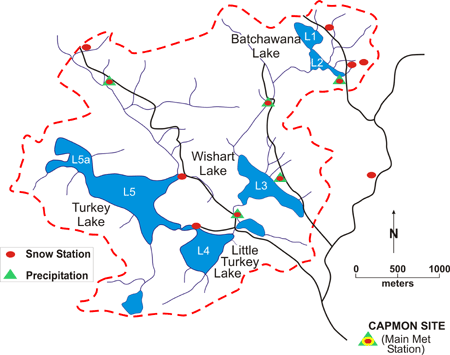
Figure 1: Location of CAPMoN and Snowpack sampling sites.
Please roll over with mouse on a desired station to view detail.
Sulphuric acid is the predominant acid in "acid rain". Atmospheric deposition of sulphate (expressed as kg/ha) is a measure of the input of this acid to the basin. Two types of sulphate deposition are measured and shown in Figure 2. "Bulk" deposition is that accumulated in a continuously open collector and contains material that enters during both wet and dry periods. "Wet-only" deposition is measured using the CAPMoN collector which opens only when it is raining or snowing. Monthly bulk deposition of sulphate (fine red line in Figure 2) is highly variable because of the large variability in monthly precipitation quantity. Annual sulphate deposition (thick black and green lines in Figure 2) has declined throughout the period of study in the Turkey Lakes Watershed (TLW) reflecting reduced sulphur dioxide emissions from upwind sources.
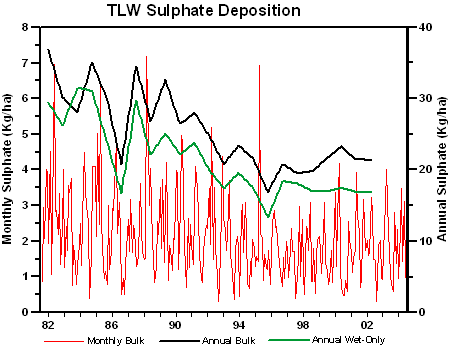
Figure 2: Long Description
Bulk and wet-only sulphate deposition from 1982 to 2004. Sulphate Deposition declined until the mid - 1990s and has been relatively constant since then.
Air concentrations of sulphur dioxide and other acidifying gases and particles are measured by drawing air through a filter located 10 m above the ground surface. Input of these acidifying gases and particles to the TLW occurs as "dry" deposition (i.e. during periods when it is not raining or snowing). Dry deposition is estimated by multiplying the measured air concentration values by a site-specific factor called a "deposition velocity". Dry deposition is ~ 40% of the annual total sulphate deposition at the TLW. Ground level ozone is also being measure at the CAPMoN site.
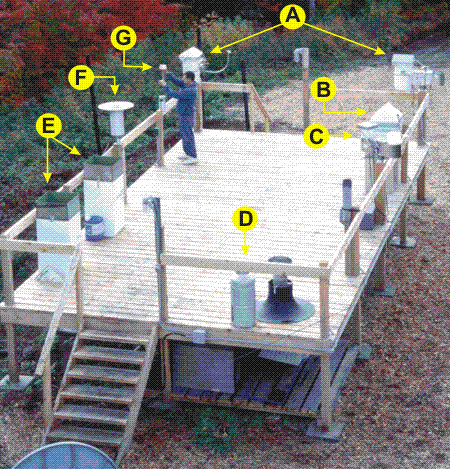
Long Description
Meteorological Instruments Deck:
A: "CAPMoN" wet-only samplers
B: Organic Contaminants sampler
C: “Great Lakes” 28-days wet-only sampler
D: Belfort recording rain/snow gauge (Nipher shield removed)
E: Bulk precipitation samplers
F: Nipher snow gauge
G: Standard rain gauge

Long Description
Precipitation collectors at the TLW. The CAPMoN wet-only collector is at right. Bulk deposition collectors are the square devices in the center. The tuba-like samplers are Nipher snow gauges.
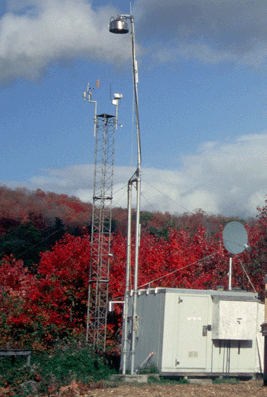
Long Description
The CAPMoN air chemistry sampler. Acidifying gases and particulates are trapped daily on a filter located at the top of the nearest tower.
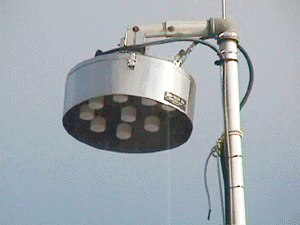
Long Description
Close up of the filter packs used to collect samples of acidifying gases and air particulates. A different filter pack is used for each 24-hour period and all the packs are replaced weekly.